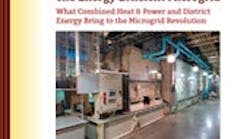A kind of collective ‘ah ha’ is driving North America toward a more distributed grid, what some call local energy. Businesses, industrial facilities, institutions and cities are realizing the value of taking control over their energy efficient supply. Local energy promises lower costs, more reliable electric supply, storm resiliency, reduced pollution, greater efficiency, community economic development and jobs, and less forfeiture of open space, habitat and aesthetics to big power plants and transmission lines. Local energy gives communities and businesses the ability to determine their energy future, rather than rely on large, distant corporations, sometimes operated by companies in other states or even countries.
Microgrids are central to this move toward local energy in the United States and Canada. Although they’ve been around for a century, microgrids are particularly attractive in their contemporary form because they bring updated technology and extraordinary intelligence to energy management.
These mini versions of the larger grid also are highly energy efficient, particularly when they employ a form of distributed energy known as combined heat and power (CHP).
This guide, our second in the Think Microgrid series, paints a picture of the emerging microgrid-driven world, with CHP at its core. What exactly is CHP? If you’re not familiar with it—or only vaguely aware—you’re not alone. Its reputation remains under the radar screen, especially compared with solar and wind energy. Yet CHP is a far more proven form of distributed energy that goes back to Thomas Edison’s day and can be found in cities and at hospitals, colleges, hotels, petrochemical facilities, manufacturing companies and many other sites where large amounts of energy are consumed. For a long time CHP seemed like the bestkept- secret of energy insiders. That’s begun to change as government leaders push for more CHP—from mayors to the highest offices. In fact, President Barack Obama has set a goal for the U.S. to add 40 GW of CHP by 2020.
